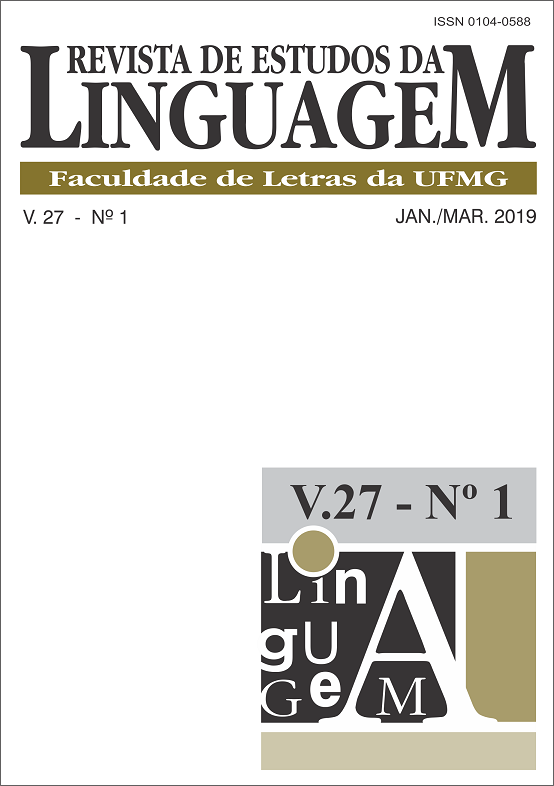Halliday’s Mood System: A Scorecard of Literacy in the English Grammar in an L2 Situation / O sistema de modo de Halliday: um quadro de resultados sobre o conhecimento da gramática da língua inglesa como L2
DOI:
https://doi.org/10.17851/2237-2083.27.1.241-274Palavras-chave:
English grammar, language acquisition, language learning, literacy, mood system, gramática do inglês, aquisição de língua, aprendizagem de língua, letramento, sistema de modo.Resumo
Abstract: It is no gainsaying that English is not only renowned in world affairs; its hegemony over other languages seems incontestable, and perhaps, unchecked. The domineering behavior has persuaded an L2 speaker to seek the knowledge of the language at all costs. It is fascinating to propose that the Halliday’s mood system could play a vibrant role in the understanding of the structures of English. This basis inspired the study to elucidate the arms of the mood system as consisting of grammatical structures of declarative, imperative, and interrogative; semiotic domains of Mood and Residue; and interpersonal grammatical transposition of MOOD. For a practical purpose, the study examined ten texts of advertisements processed through the mood system. The analysis revealed the verbal group as containing the finite and the predicator. Moreover, in a situation of fusion, both Finite and Predicator shared the verbal functional entity in terms of tense and natural ‘process’ statuses. Furthermore, Subject, Finite, Predicator, Complement, and Adjunct (SFPCA) are the components of the declarative, Predicator, Complement, and Adjunct (PCA) represent the jussive imperative; and SPCAs are units of the suggestive imperative. The study suggested that the appreciation of mood systemic sequences could quicken an L2 speaker to a better-cum-fuller understanding of English grammatical system.
Keywords: English grammar; language acquisition; language learning; literacy; mood system.
Resumo: Não é novidade que o inglês é reconhecido mundialmente; sua hegemonia parece incontestável e talvez, sem julgamento. A dominância dessa língua persuade seus falantes como L2 a buscarem conhecimento sobre ela de todas as formas. É fascinante propor que o sistema de modo de Halliday poderia ter um papel importante na compreensão das estruturas do inglês. Essa ideia inspirou esse estudo a elucidar o papel do sistema de modo, o qual consiste de estruturas gramaticais declarativas, imperativas e interrogativas; que pertencem ao domínio semiótico de Modo e Resíduo e à transposição gramatical interpessoal de MODO. Para o estudo dez testos de propagandas foram processados através do sistema de modo. A análise revelou que o grupo verbal contém formas Finitas e Predicadores. Ademais, numa situação de fusão, ambos o sistema Finito e Predicador dividiam a função verbal de entidade funcional em termos de tempo e processos naturais. Além disso, Sujeito, Finito, Predicador, Complemento e Adjunto (SFPCA) são componentes de declarativas; Predicador, Complemento e Adjunto (PCA) representam o imperativo jussivo; e SPCAs são unidades do imperativo sugestivo. O estudo sugere que a observação de sequências sistêmicas de modo poderiam agilizar o conhecimento de um aprendiz de inglês L2 do sistema gramatical da língua.
Palavras-chave: gramática do inglês; aquisição de língua; aprendizagem de língua; letramento; sistema de modo.





